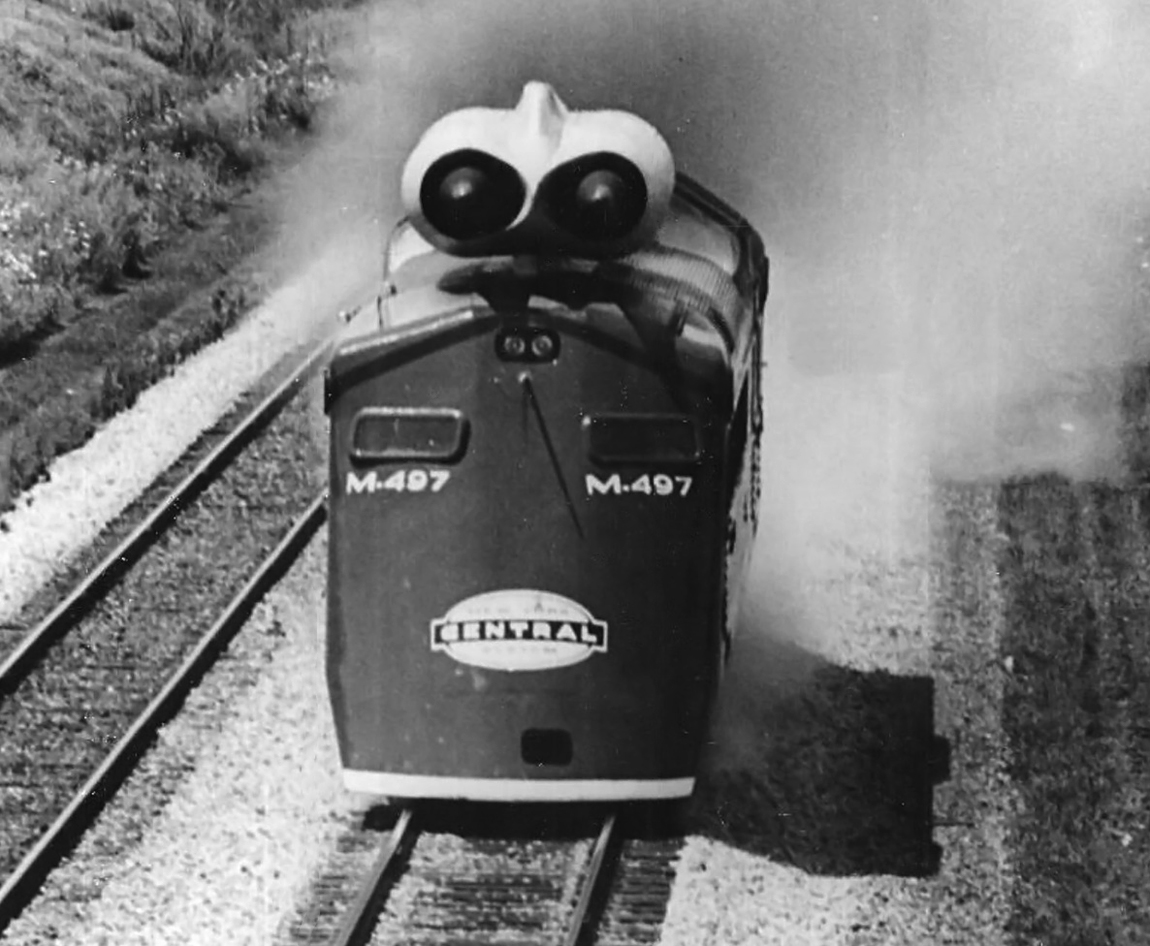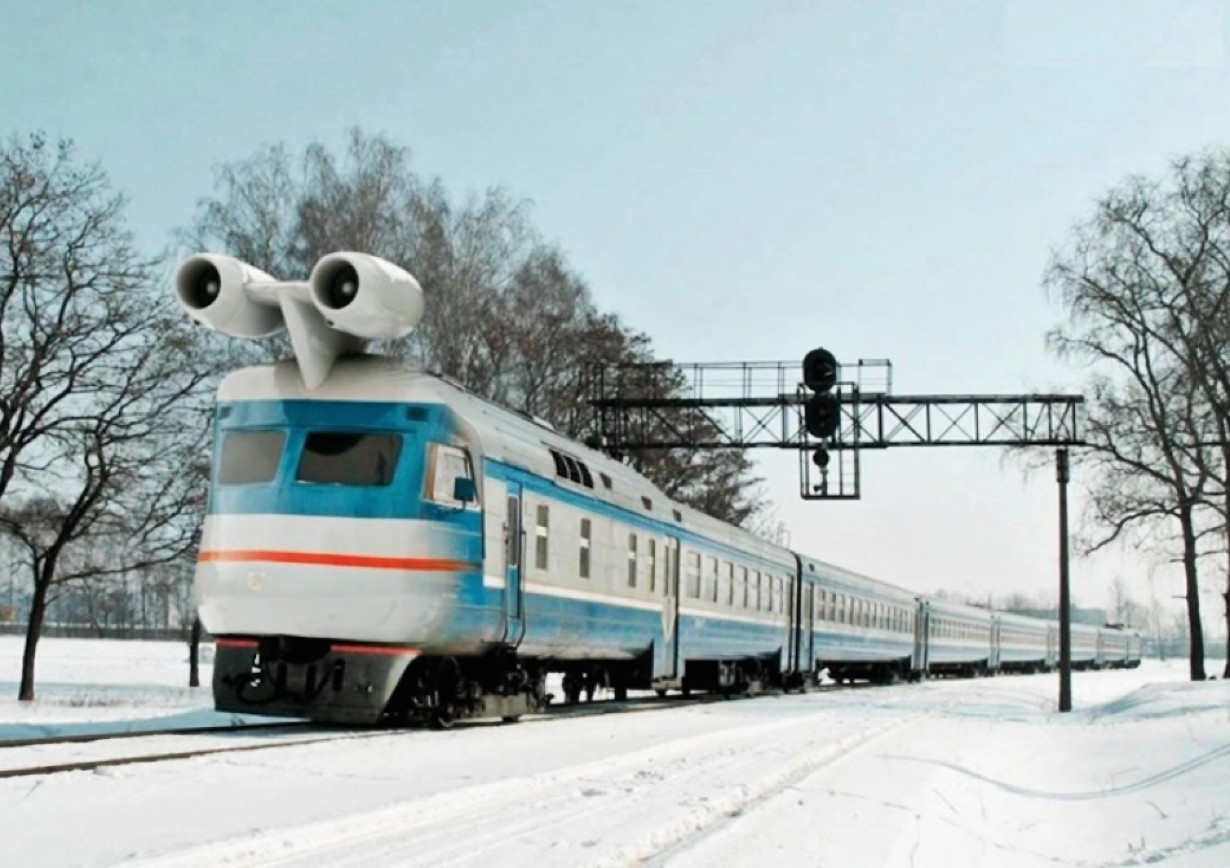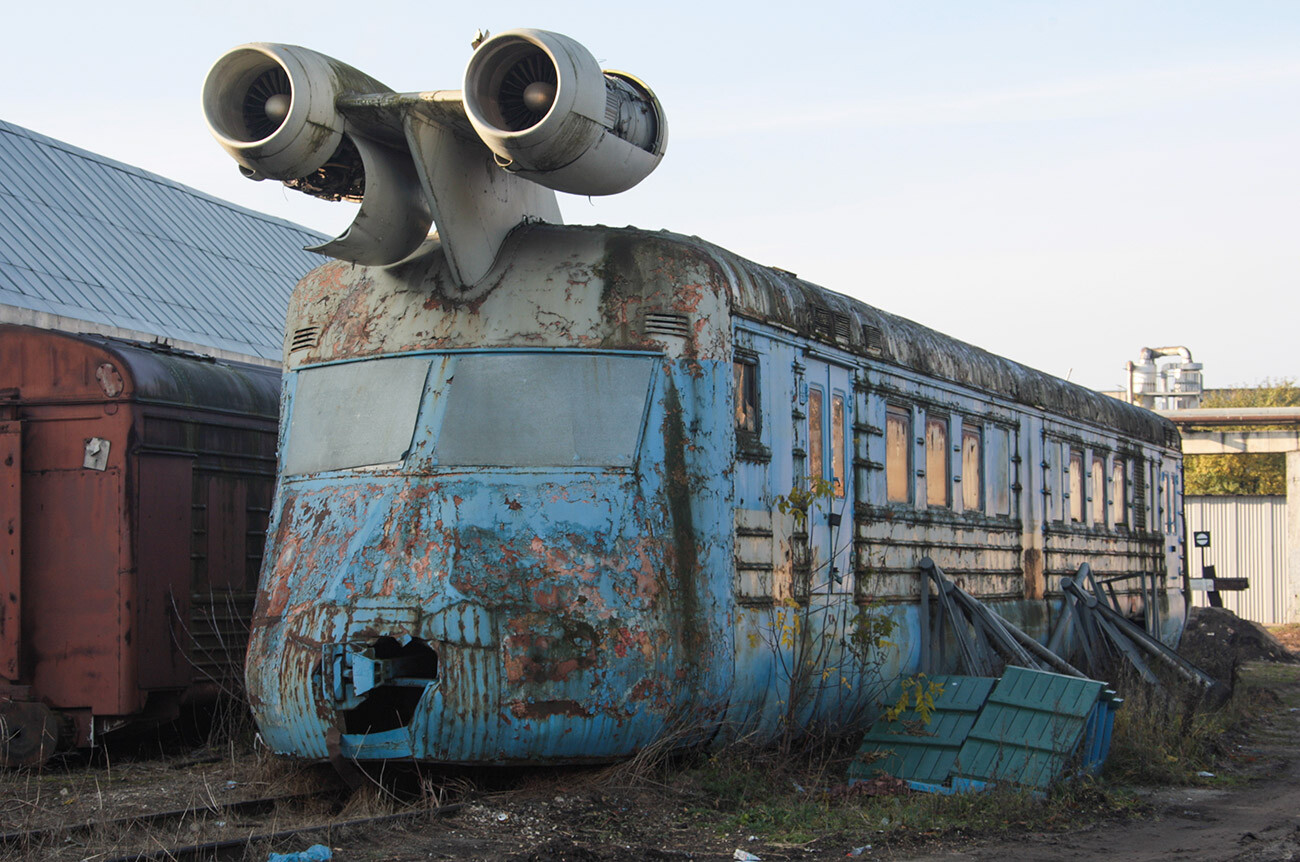Modern technology has come a long way, with bullet trains running across the lengths and breadths of countries at speeds that have made daily commutes faster and life more manageable.
More so, with the advent of more sophisticated technology, even air taxis are increasing in the commercial market.
However, several decades ago, the USSR developed a special train that ran on an aircraft engine at speeds that could only be imagined in that day and age.
In the 1960s, the Soviet Union conceptualized and developed a high-speed train that came to be known as the ‘Speedy Wagon Laboratory.’
This was the peak of the Cold war rivalry between the Soviet Union and the United States. The New York Central Railway’s M-497 project in the US, code-named “Black Beetle,” ran similar tests in 1966. As part of these tests, a train weighing 51.3 tons reached a speed of 296 kilometers/hour.

Thus, it became critical for the Soviet Union to keep up and make its Speedy Wagon Laboratory work. Using the ER22 electric train carriage as a base, the Kalininsky Carriage Works of the Soviet Union created a train.
Several AI-25 engines, which were employed in the cutting-edge Yak-40 aircraft, were bolted on the train car’s roof.
The wagon was equipped with nose and tail cones to reduce air resistance. The brakes were also significantly improved because they had to support a heavy load when the engines were started.

According to popular accounts, 15 mock-up models of the wagon were built as the testing had to be conducted in a wind tunnel.
The superfast train was finally unveiled in October of 1970 and reportedly did well in tests, approaching a speed of more than 200 kilometers per hour. This was much faster than other modern high-speed trains like the Shinkansen, the first bullet train in Japan.
However, despite its stellar performance, the Speedy Wagon Laboratory was never mass-produced and was eventually abandoned.
The Soviet Jet Train That Never Took Off
The initial successful test run of the Soviet Union’s jet train was followed by five years of testing that saw the super-speed train even run on some public stretches of the Soviet railway. The dream was to mass produce the superfast train and have it crisscross the length and breadth of the Soviet territory.
However, years of testing revealed that the pricey jet engines used too much gasoline in what would have been the transportation of the future.
Additionally, a tiny issue with the rail system may have resulted in the catastrophic failure of the superfast train. For instance, the railroad was secured by gravel, but it would have had to be replaced with concrete fixtures to prevent it from blowing into pieces.
The train’s stability at high speeds had some issues, but the designers were sure they could fix these. But as the train ran past heavily populated regions, there were problems with noise from the roaring jets. These were some anomalies that could never really be fixed by the engineers.

With the fractures slowly appearing in the Soviet Union and the communist bloc’s preoccupation with quelling the rebellions, the hopes for the jet train were dashed. The new railway systems rendered it economically unviable in no time.
Soon after, the rusting wreck was relocated to the St. Petersburg industrial yard, where it gathered dust for several years.
But the train was eventually saved and given a suitable tribute in 2008 after languishing in a yard for decades. The front was removed, painted over, and placed on a plinth in front of the Tver Carriage Works.
Even though the Soviet dream to run a jet train never came true, the program was not rendered completely useless. The test run was used as a lesson for future high-speed rail experiments and eventually gave way to the Russian Troika cars.
As for the Soviet rival, the US-built turbo jet train is still believed to be the fastest train ever built in North America.
The world has come a long way since the Speedy Wagon Project, with Japan’s bullet train serving as a model for high-speed commutes. Slowly, China joined the bandwagon to make high-speed rail travel a reality.
Several technologically advanced countries have now made the transition. However, the Soviet project is still remembered for its innovation and potential.
- Contact the author at sakshi.tiwari9555 (at) gmail.com
- Follow EurAsian Times on Google News




